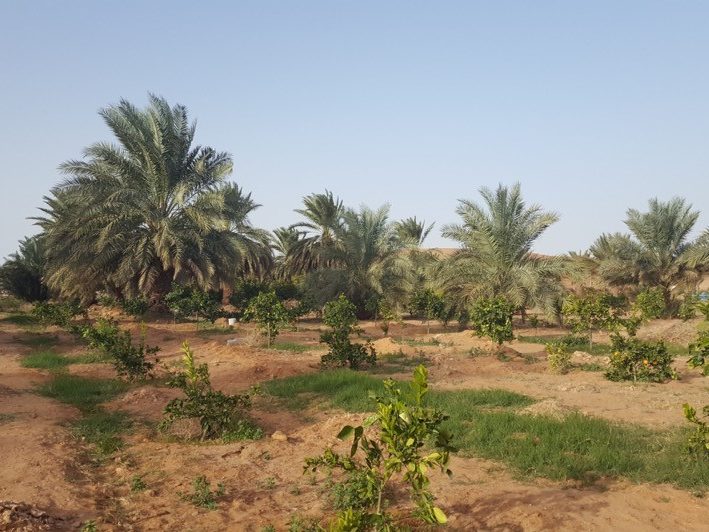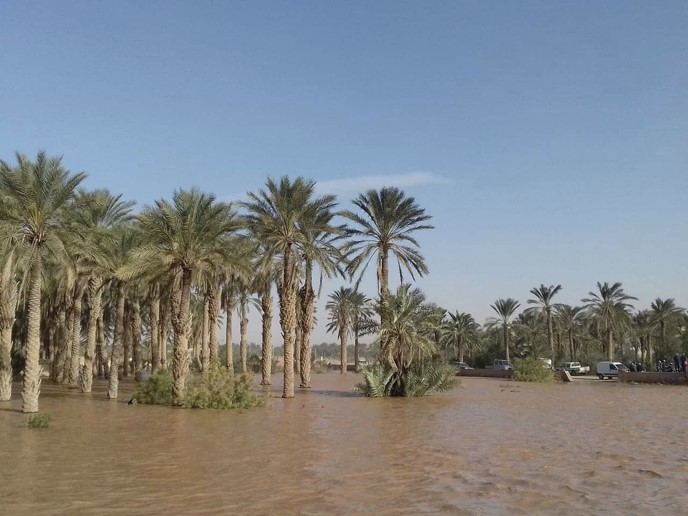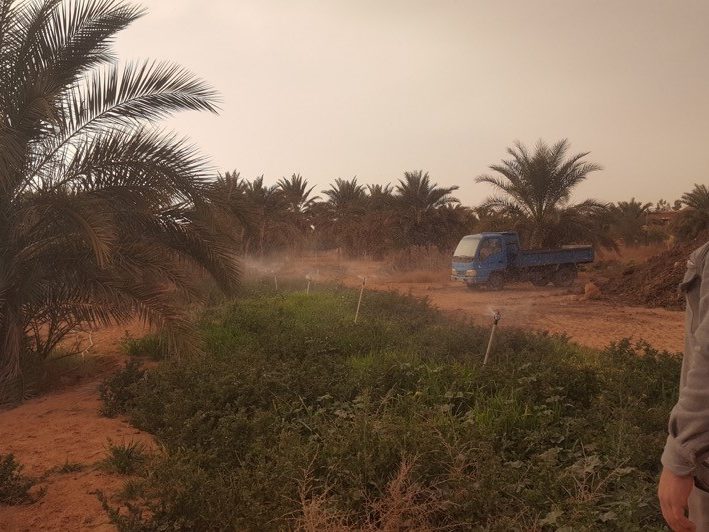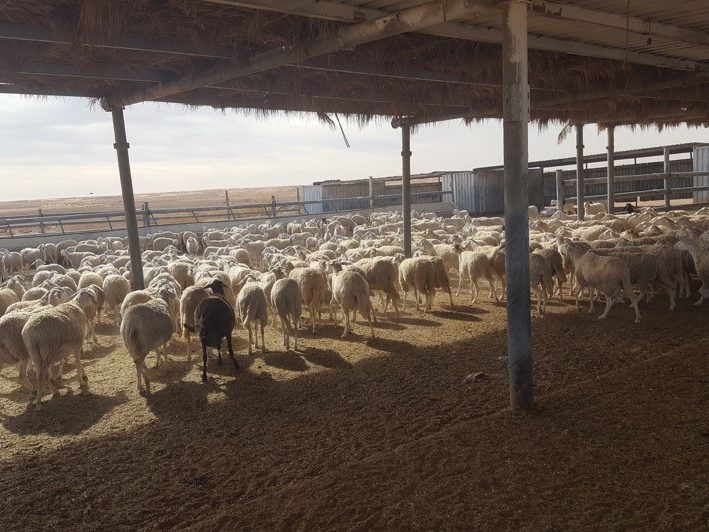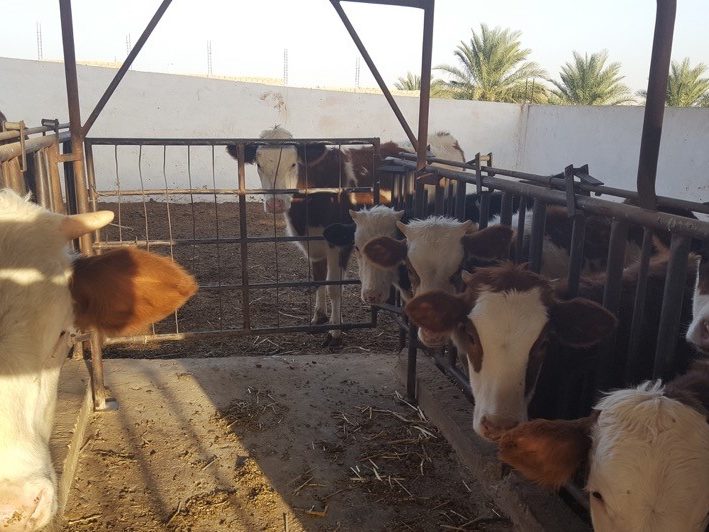a
l
In Algeria, the Massire project focuses on Ghardaia Wilaya, which is located at the outskirts of Saharan Desert. Rainfall is very limited and water resources are mainly stored in shallow aquifers and the Intercalar Continental aquifer. Inundations caused by rainfall on the southern slopes of Saharan Atlas Mountains refill these shallow aquifers.
Local inhabitants have developed infrastructures (e.g., weirs, canals) to collect and surface water and recharge alluvial aquifers. Water stored is then pumped for irrigation and drinking water. In Ghardaia Wilaya, there are 126 weirs, 5,600 wells pumping from shallow aquifers, and 690 boreholes pumping from Intercalar Continental Aquifer.
© Ameur
© Ameur, © Bekaddour
In total, 310,000 ha can possibly be farmed in Ghardaia Wilaya, but only 54,000 ha are actually farmed. Palm trees are the most common crop and cover 11,360 ha (1.3 million palm trees). In 2018, 57,900 tons of dates were produced, out of which 24,000 tons of Deglet Nour dates. A total of 77,200 tons of horticulture crops is produced annually, mostly in Hassi El-F’Hel and in El-Menea. Ghardaia Wilaya has recently become a milk production area and the production of forages has grown fast over the last years, especially corn and alfalfa. Ceral crops is considered a strategic crop at national level and has developed quickly in the southern part of the Wilaya. Approximately 21,000 tons is produced every year on 5,000 ha. More recently, industrial crops such as peanuts have been experimented. Local associations also promote other value chains, such as saffron and honey.
“My multiple activites are the roots of my citrus trees”. This is what a farmer said to underline the importance of these activities to farm successfully. Members of the M’Zab (a major community in the wilaya) are known for their diversified economic activities. Most farmers have other activities, e.g., masonry, trade, or working as civil servant.
© Ameur



